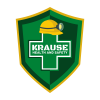Stay Safe this Summer, Avoid Heat-related Illnesses
With Summer just around the corner, it’s important for us all to stay safe.
During very hot and extreme heat conditions, people are at greater risk of heat-related illness. Victims can be of any age however the people most at risk are young children, the elderly and people who work or exercise for prolonged periods of time out in the sun.
Some heat-related illnesses include heat cramps, heat rash, dehydration, heat exhaustion and most serious, heatstroke.
Heatstroke is a life-threatening condition in which the body overheats when it can no longer maintain a healthy temperature. Heatstroke occurs when a person’s body temperature reaches above 40°C and the body’s internal systems start to shut down.
Symptoms of heat stroke include:
- High body temperature. A core body temperature of 40 C or higher
- Sweating stops as your body can no longer cool itself down.
- Altered mental state or behaviour. Confusion, agitation, slurred speech, irritability,
- Nausea and vomiting. You may feel sick or vomit.
- Flushed skin. Your skin may turn red as your body temperature increases.
- Rapid breathing. Your breathing may become rapid and shallow.
- Rapid pulse. Your heart may feel like its racing.
- Headaches
- Dizziness, seizures or loss of consciousness
Heatstroke is a medical emergency. If someone is suffering from heatstroke, call triple zero (000) and ask for an ambulance.
Meanwhile, place the casualty in a cool place and lower their body temperature by removing excess clothing, sponging them with cool water and fanning the damp skin, placing cold packs under their armpits, behind the knees, groin, or on the back of their neck.
Monitor and record the sufferer’s vital signs until emergency services arrive.
If the person suffering heatstroke is unresponsive and not breathing normally, follow the DRSABCD action plan.
So how can we prevent heat-related illnesses?
- Drink plenty of water – even if you don’t feel thirsty continuing to sip on water throughout the day is very important. Limit hot or sugary drinks.
- Keep cool – try to avoid direct sun. Wear a hat and lightweight, loose-fitting, clothing.
- Protect against sunburn. Sunburn affects your body’s ability to cool itself, so protect yourself outdoors with a wide-brimmed hat and sunglasses and use a broad-spectrum sunscreen with an SPF of at least 30. Apply sunscreen generously and reapply every two hours — or more often if you’re swimming or sweating.
- Keep your house cool – close windows, shut curtains and blinds, and use air-conditioning if you have it.
- Help others – visit or phone friends, family and neighbours who are more at risk. Keep children cool and give them lots of water to drink. Ensure pets have plenty of water and shade.
- Plan your day – Try to schedule exercise or physical labour for cooler parts of the day, such as early morning or evening.
- Never leave babies, children, or animals alone in a car.
Heat-related illnesses are preventable keep hydrated, stay cool, don’t overdo it during the hottest parts of the day, and should you encounter someone having symptoms of heatstroke call 000 for an ambulance.
STAY SAFE THIS SUMMER, LOOK AFTER ONE ANOTHER AND YOUR PETS.
References
Queensland Ambulance Service, First Aid Manual Edition 11 – February 2018
https://www.healthdirect.gov.au/heatstroke
https://www.mayoclinic.org/diseases-conditions/heat-stroke/symptoms-causes

